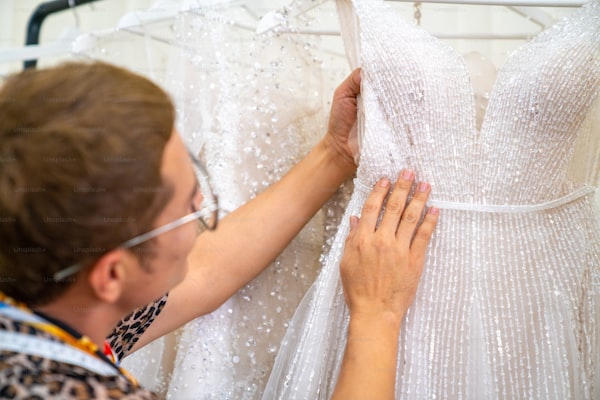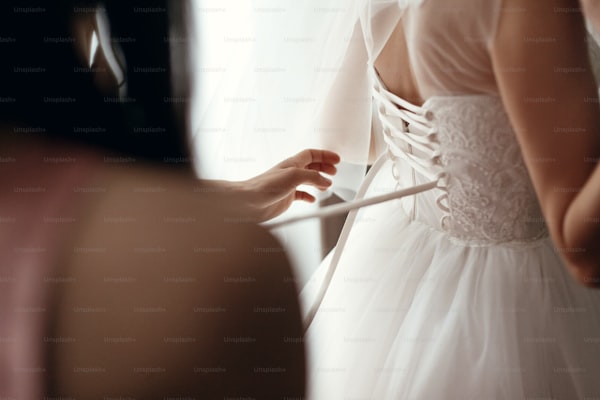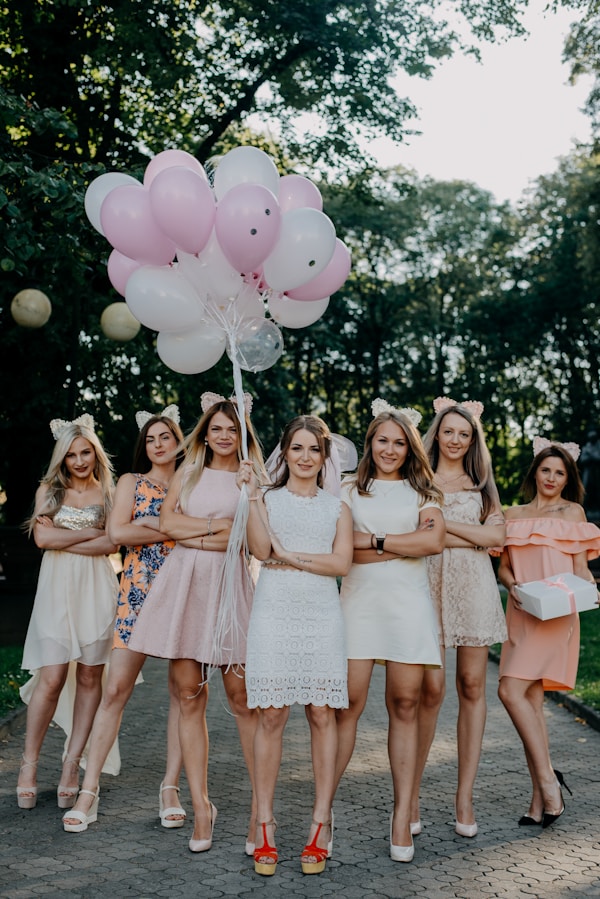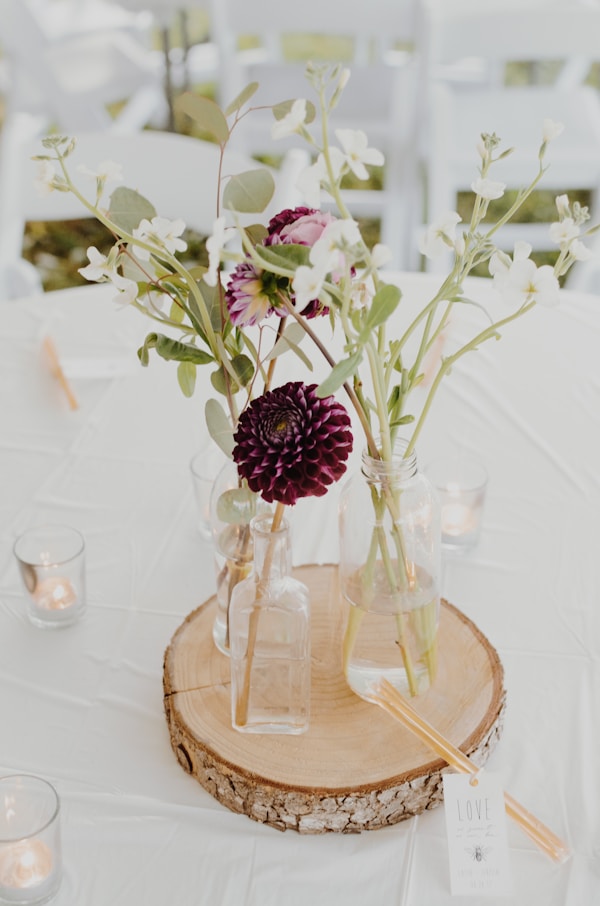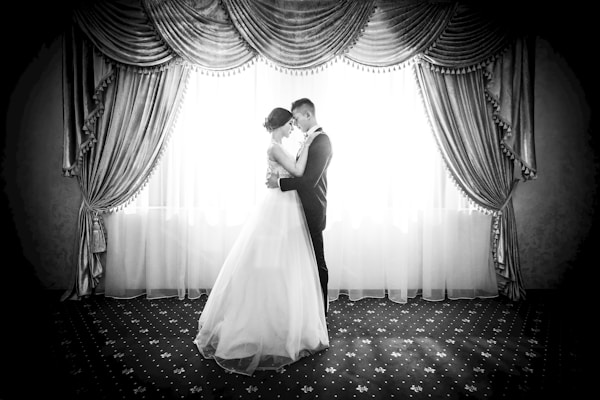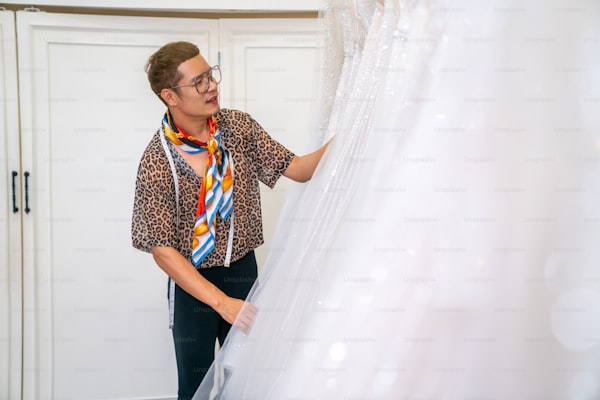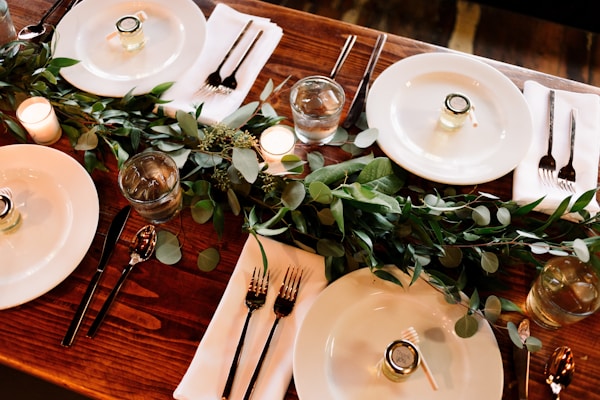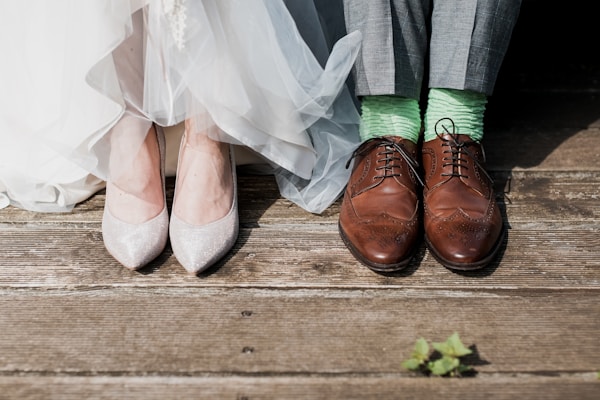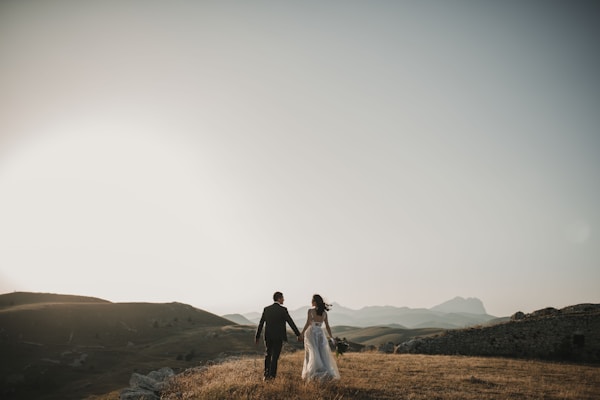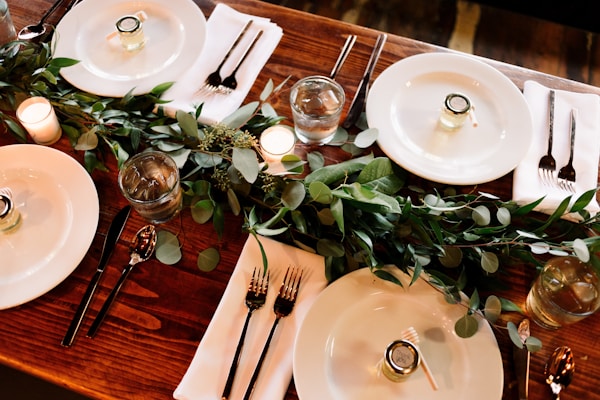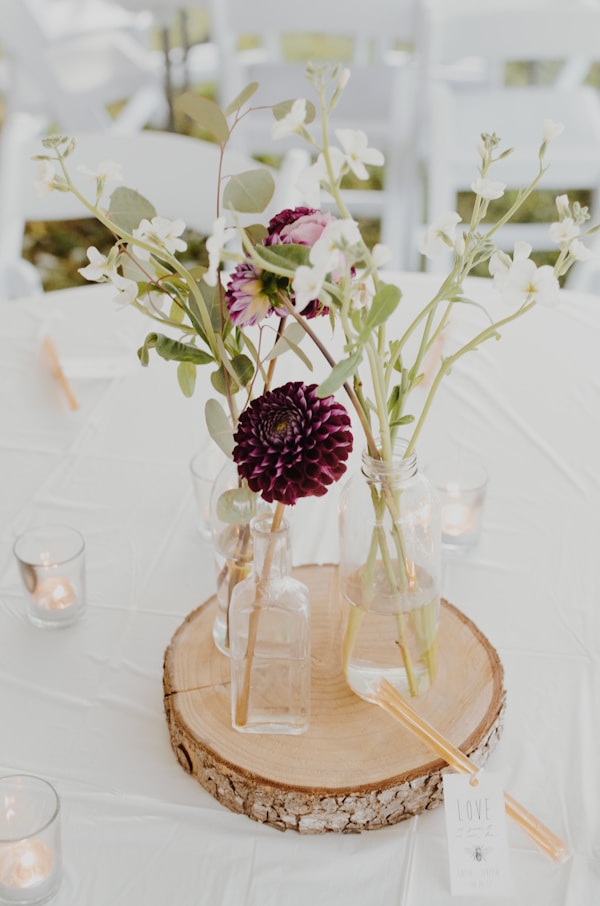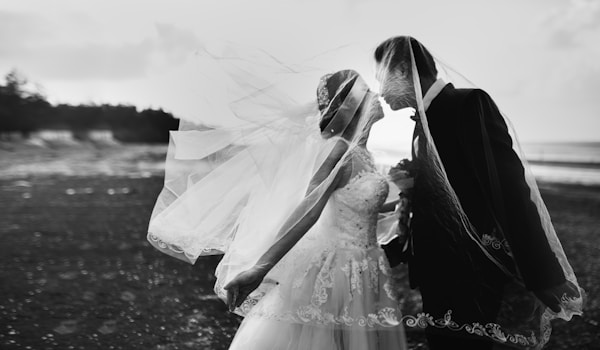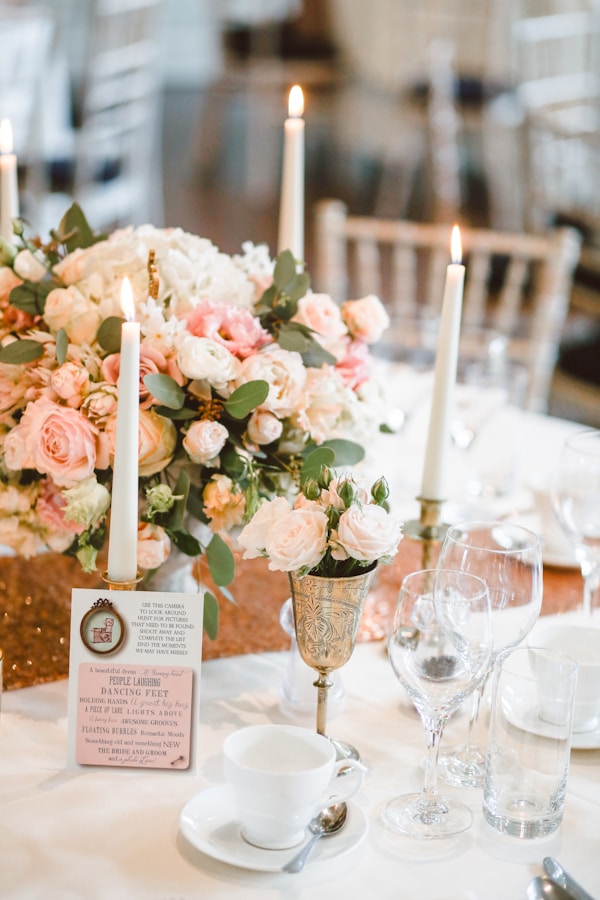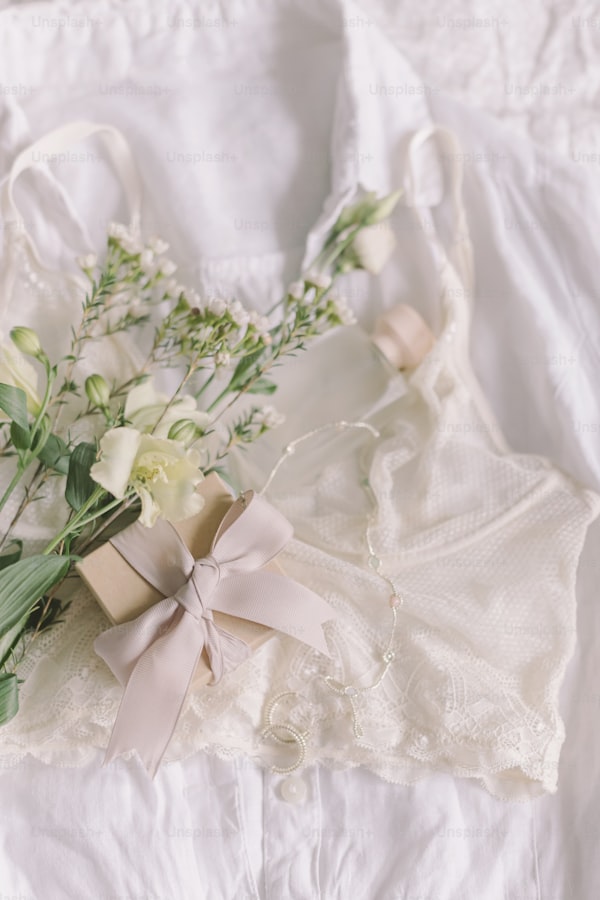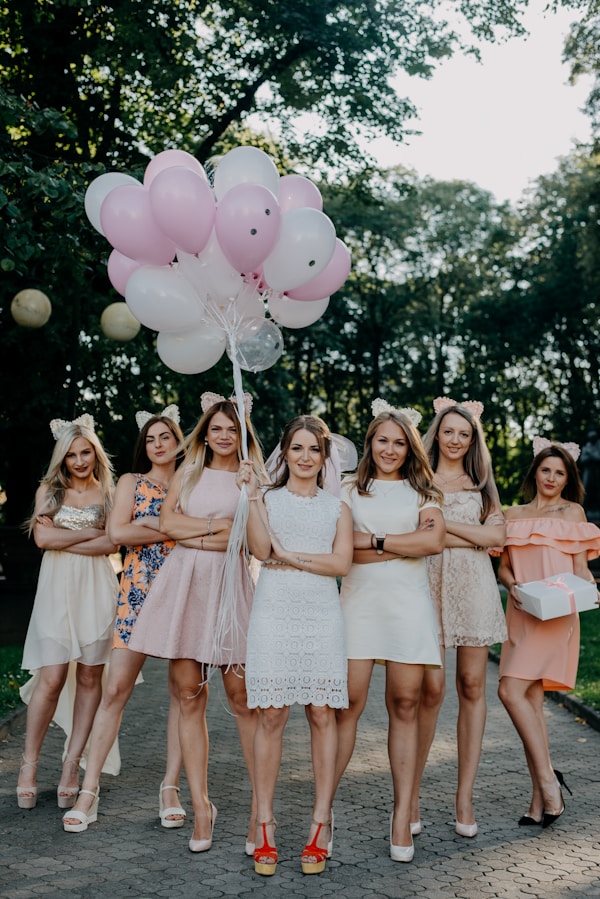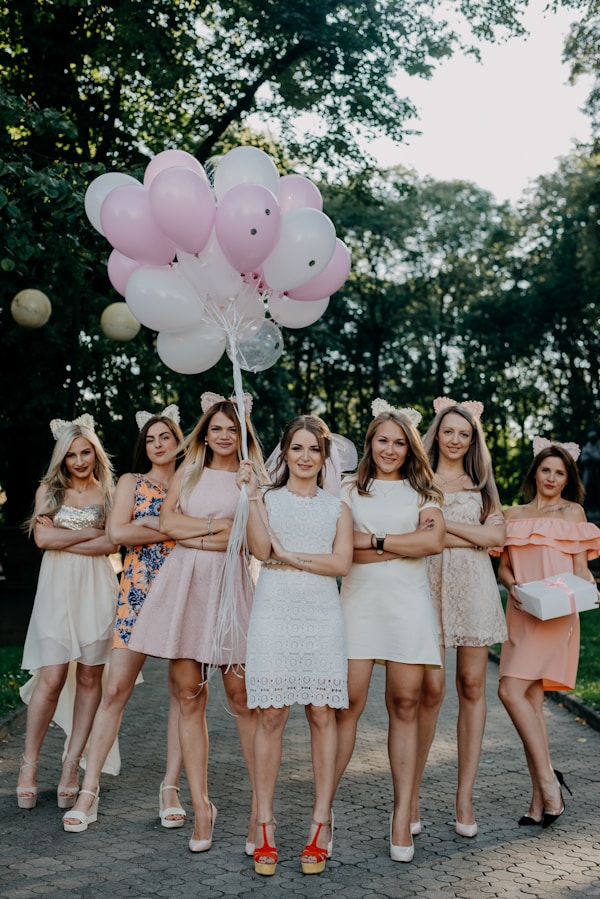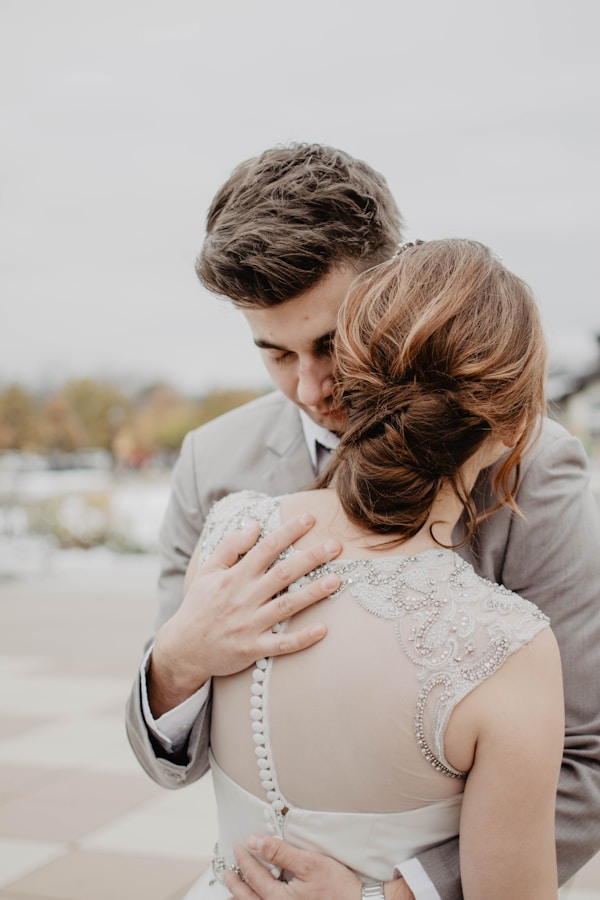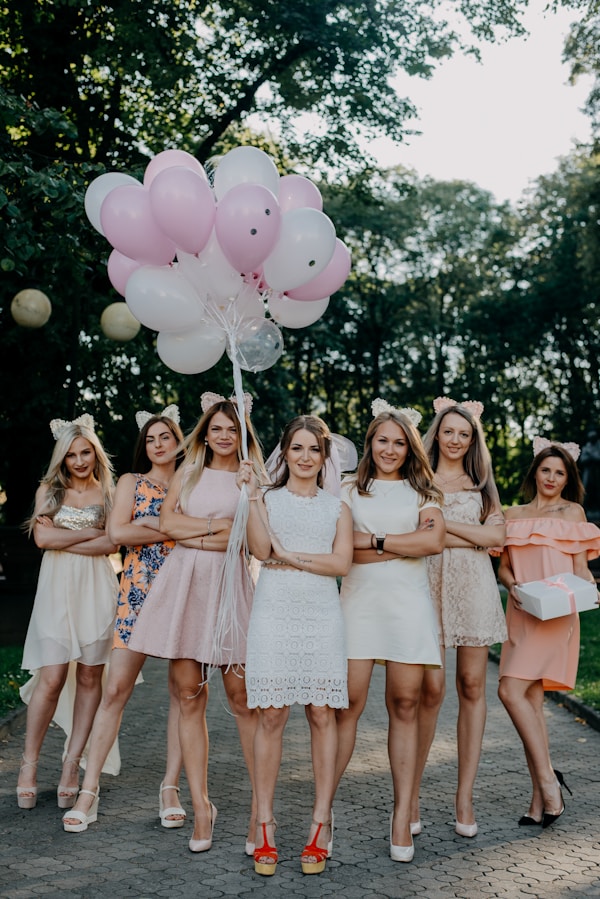How to Effectively Manage Fitting Sessions for a Wedding Dress with Corsetry
Finding the perfect wedding dress is one of the most exciting parts of the wedding planning process. For many brides, this experience is even more special when incorporating corsetry into their dress. However, managing fitting sessions for a wedding dress with corsetry can be a complex task. In this article, we will explore effective strategies to ensure a smooth and enjoyable fitting process, while addressing common concerns and questions brides may have.Understanding Corsetry in Wedding DressesCorsetry refers to the structured framework of a garment, often used to shape and support the body. In wedding dresses, corsetry can enhance the silhouette, providing support to the bust and creating an hourglass figure. However, finding the right fit can be more challenging than with traditional dresses. Here, we will discuss some critical aspects to consider.Importance of Choosing the Right Bridal BoutiqueThe first step in managing fitting sessions is selecting a bridal boutique that specializes in dresses with corsetry. Look for boutiques that have: Experienced Staff: Staff members who understand the intricacies of corsetry and can provide expert guidance. A Variety of Styles: A diverse selection of dresses to suit different body types and personal styles. Positive Reviews: Recommendations or testimonials from other brides regarding their fitting experiences.Scheduling Your Fitting SessionsOnce you have chosen a boutique, the next step is scheduling fitting sessions. Here are so...
Mastering the Art of Designing a High-Low Hemline Wedding Dress: Best Practices and Tips
IntroductionWhen it comes to wedding attire, the wedding dress holds the highest place of importance. Trends evolve, and one style that has recently gained traction is the high-low hemline wedding dress. This design seamlessly blends elegance with modern aesthetics. However, creating a stunning wedding dress with a high-low hemline requires knowledge of fabric, tailoring techniques, and an understanding of body shapes. In this article, we will explore the best practices for creating a wedding dress with a high-low hemline, ensuring you navigate this trend with confidence and style.Understanding the High-Low HemlineThe high-low hemline features a shorter front that gradually lengthens at the back, providing a unique silhouette. This style not only allows the bride to showcase her shoes but also adds a playful elegance suitable for both formal ceremonies and casual receptions. The versatility of the high-low hemline makes it a popular choice among brides looking for something different.Why Choose a High-Low Hemline Wedding Dress?Brides are often faced with the dilemma of choosing a traditional full-length gown or a modern alternative. Here are some reasons why a high-low hemline is a fantastic choice: Comfort: The shorter front allows for ease of movement, making it more comfortable for dancing and walking. Showcase Footwear: A high-low dress beautifully displays statement shoes, which can be a fun way to express personal style. Unique Style: High-low dresses stand out...
How to Prevent Damage to Delicate Fabrics When Making Wedding Dress Alterations
Understanding Delicate Fabrics in Wedding Dress AlterationsWedding dresses hold immense sentimental value, and they are often crafted from exquisite fabrics that can be quite delicate. When it comes to alterations, it's crucial to handle these fabrics with utmost care to avoid any damage. This guide aims to explore effective strategies for preventing damage to delicate fabrics during wedding dress alterations, ensuring that the dress looks flawless on the big day.Common Delicate Fabrics Used in Wedding DressesBefore diving into alteration techniques, it’s essential to understand the types of delicate fabrics commonly used in wedding dresses. Each fabric has its unique properties and requires specific handling. Here are some popular delicate fabrics:Fabric TypeCharacteristicsCare TipsSatinSmooth and glossy, but can fray easilyHandle with care and avoid excessive steamChiffonSheer and lightweight, may snag or tear easilyUse a gentle touch and avoid pinning too tightlyLaceBeautiful and intricate, but can unravelSecure edges with care and avoid heavy stitchingOrganzaStiff and crisp, can scorch with high heatUse low heat when pressing and avoid high temperaturesAssessing the Dress Before AlterationsBefore making any alterations, it’s important to assess the wedding dress thoroughly. Check for any existing damage, such as loose threads or fraying edges, and determine the fabric type. This evaluation helps in selecting the right tools and techniques for the alterations.Key Tips for ...
Mastering the Art of Hand-Sewn Lace Appliqué for Wedding Dresses
IntroductionEvery bride dreams of a wedding dress that not only reflects her personal style but also features exquisite details that make it truly unique. Among the list of elegant embellishments, hand-sewn lace appliqué stands out as a classic choice that adds depth and sophistication to wedding gowns. In this article, we will explore the techniques used to add hand-sewn lace appliqué to a wedding dress, delving into the materials, methods, and tips to achieve breathtaking results. Whether you are a seasoned seamstress or an enthusiastic amateur, this guide will provide you with the knowledge you need to master this beautiful craft.Understanding Lace AppliquéLace appliqué is the technique of sewing lace onto fabric to create ornamental designs. This method allows for infinite creativity, enabling designers and brides to customize their wedding dresses to their liking. Traditionally, lace appliqué was a labor-intensive craft, but today there are various techniques to simplify the process while maintaining the beauty of hand-sewn art.1. Choosing the Right LaceThe first step in adding hand-sewn lace appliqué is selecting the appropriate lace. Consider factors such as texture, color, and pattern. There are numerous types of lace available, including:Chantilly Lace – known for its delicate floral patterns.Alençon Lace – features a raised cord outline which adds dimension.Venise Lace – has a more structured form, often used for heavier appliqué designs.When selecting lace, match i...
Designing a Wedding Dress That Perfectly Mirrors the Bride's Personal Style
Understanding the bride's personal styleDesigning a wedding dress that reflects the bride's personal style is an intricate journey that begins with understanding her personality, preferences, and the overall theme of the wedding. The wedding dress is not just a garment; it embodies the bride's identity and her vision for the most special day of her life. Whether she leans towards modern minimalism or vintage elegance, crafting a dress that speaks to her soul is paramount.Steps to Design the Perfect Wedding DressCreating a wedding dress that resonates with the bride encompasses several critical steps. We will outline these steps and provide insight into how each contributes to the overall vision of the dress.1. Consultation with the BrideThe first step in designing a wedding dress is a comprehensive consultation with the bride. This session can uncover essential insights about her style preferences. During the consultation, consider asking: What are your favorite colors? Are there specific fabrics you prefer? Do you envision your dress to have a specific silhouette? (A-line, ball gown, mermaid, etc.) What kind of embellishments, if any, do you want? What styles influence your daily wardrobe?2. Research and InspirationOnce you gather the bride’s thoughts, the next step is research. Browse through bridal magazines, online platforms like Pinterest, and fashion websites. Pay close attention to wedding dress designers whose work might reflect the bride’s style. Colle...
Achieving the Perfect Fit: Methods for a Wedding Dress with a Square Neckline
Every bride dreams of looking stunning on her wedding day, and one of the most critical components is undoubtedly the wedding dress. A square neckline can provide a unique aesthetic, highlighting the collarbones and adding elegance to overall bridal attire. However, ensuring that a wedding dress fits perfectly requires a combination of methods and techniques. In this article, we will explore various approaches to achieve a flawless fit for a wedding dress featuring a square neckline, while also addressing common challenges brides face during their dress fitting process.Understanding the Square NecklineThe square neckline is characterized by its straight edges and wide shape that creates a prominent, open area around the bust. This style can be incredibly flattering, but it holds specific fitting requirements. The right fit is essential to avoid wardrobe malfunctions, enhance comfort, and showcase the bride's figure in the best light. It’s crucial for brides to understand their body type and select the right alterations for a square neckline dress.Common Challenges with a Square NecklineWhen it comes to achieving the perfect fit, various common challenges related to square necklines can occur. These include: Gaping: If the bodice is too loose, it can result in gaping around the neckline area. Bunching: A poorly tailored bodice may bunch up, detracting from the overall silhouette. Adjusting for Bust Size: Different bust sizes can significantly affect the look and fit o...
Mastering the Art of Sewing Wedding Dresses: Handling Delicate Materials with Ease
Introduction to Sewing Wedding DressesSewing a wedding dress is a dream for many aspiring designers and seamstresses. Among the many challenges faced, handling delicate materials, especially when dealing with multiple layers, can be particularly daunting. In this article, we will explore effective strategies and tips to help you navigate this intricate process.Understanding Delicate MaterialsDelicate materials can include fabrics such as silk, chiffon, lace, organza, and tulle. Each of these fabrics brings its own unique challenges, especially when layered. Here’s a brief overview of the characteristics of some common delicate fabrics:FabricCharacteristicsBest UsesSilkSoft, lustrous, and slipperyLinings and overlaysChiffonLightweight, sheer, and flowingLayering for skirts or sleevesLaceIntricate, textured, and often used for decorationFor embellishments and overlaysOrganzaCrisp, sheer, and holds shape wellStructured skirts or overlaysTulleLightweight, net-like, and often used in layersBodices and fullness in skirtsPreparing to Sew Wedding Dresses with Delicate FabricsBefore diving into sewing, preparation is crucial for managing delicate materials. Here are detailed steps to ensure a smooth sewing process:1. Pre-Wash Your FabricsWhile some delicate materials are not washable, pre-washing those that can be is recommended. This helps remove any finishes that might interfere with sewing and ensures that the fabric won’t shrink after construction. Always follow the care instructi...
Ultimate Guide to Creating a Voluminous Wedding Dress: Step-by-Step Instructions
What Are the Steps for Creating a Wedding Dress with a Voluminous Skirt?The dream of many brides is to walk down the aisle in a stunning wedding dress that captures attention and embodies their unique style, and nothing says elegance quite like a voluminous skirt. This article will guide you through the essential steps to create a wedding dress with a voluminous skirt, ensuring that your big day feels like a fairy tale.Why Choose a Voluminous Skirt?A voluminous skirt is often chosen for its romantic appeal and dramatic flair. The fullness of the skirt adds a sense of grandeur, making it ideal for traditional ceremonies as well as modern weddings. Here are some reasons to consider: Elegance: A voluminous skirt can make any bride feel like a princess. Versatility: It can be styled in various ways to suit different themes. Comfort: Many designs incorporate functionality, allowing ease of movement.Step-by-Step Guide to Creating a Voluminous Wedding DressStep 1: Gather Your MaterialsBefore diving into the creation process, it’s essential to gather all necessary materials. Here’s a list of what you will need: Materials Description Fabric Choose tulle, organza, or a combination for the skirt. Pattern A bridal gown pattern specific to voluminous designs. Sewing Machine For stitching the garment together. Scissors For cutting fabric. Measuring Tape To ensure accurate sizing. Thread Should match the fabric color. Boning For added...
Mastering the Art of Creating a Wedding Dress with an Illusion Bodice
What Techniques Are Used to Create a Wedding Dress with an Illusion Bodice?When it comes to wedding dresses, few styles are as enchanting and elegant as those featuring an illusion bodice. This design creates a breathtaking effect while providing the perfect blend of sophistication and allure. Many brides search for the best ways to incorporate this beautiful style into their wedding attire. In this article, we explore the various techniques used to create a wedding dress with an illusion bodice, ensuring you’ll be equipped with all the knowledge you need to make an informed choice for your special day.The Allure of the Illusion BodiceBefore diving into the techniques, it's essential to understand why the illusion bodice has captured the hearts of brides worldwide. This innovative design typically uses sheer fabrics and strategic placement of embellishments to create the appearance of a fitted bodice while offering a sensual yet modest statement. Here are a few reasons why brides are drawn to this style: Versatility: The illusion bodice can be integrated into a variety of dress styles, from A-line to mermaid silhouettes. Illusion of Skin: The sheer fabric gives the illusion of skin while providing coverage, striking a perfect balance between revealing and concealed. Embellishment Opportunities: Beading, lace, and embroidery can all be incorporated, making each dress unique and personalized.Techniques for Creating an Illusion BodiceThe fabrication of an illusion bodic...
How to Effectively Manage Production Costs When Designing Wedding Dresses with Rare Materials
IntroductionDesigning wedding dresses is a meticulous art form, especially when it involves rare materials. The charm and uniqueness of these materials can set a wedding dress apart, but they also come with challenges, particularly in managing production costs. In this article, we will explore effective strategies for managing production costs while maintaining quality and creativity.Understanding the Importance of Rare MaterialsUsing rare materials in wedding dress design can significantly elevate the garment's aesthetic appeal. These materials often include luxury fabrics like silk chiffon, French lace, or even sustainable options like organic cotton. However, the premium nature of these textiles usually leads to increased costs. Thus, it's vital to have a comprehensive expense management plan in place.Common Challenges in Managing CostsWhen dealing with rare materials, designers face various challenges: High Material Costs: Rare materials can be five to ten times more expensive than standard fabrics. Limited Supply: Sourcing can be inconsistent, affecting production timelines. Skilled Labor: Specialized techniques may require additional training or hiring of skilled labor.Strategies for Managing Production Costs1. Source Materials WiselyYour choice of suppliers plays a crucial role in cost management. Here are some tips: Build Relationships: Developing a good relationship with fabric suppliers can provide you with better prices and insights on new stock. Bul...
Exploring the Methods to Create a Stunning Wedding Dress with a Detachable Petticoat
Understanding Wedding Dress DesignCreating the perfect wedding dress is a dream for many brides. One popular trend in bridal fashion is the use of a detachable petticoat. This design not only allows for a versatile look but also provides comfort and ease throughout the wedding day. In this article, we will explore the various methods used to create a wedding dress with a detachable petticoat, offering insights into design, materials, and craftsmanship.What is a Detachable Petticoat?A detachable petticoat is an underlayer of fabric that adds volume and shape to the skirt of a wedding dress. Brides can choose to wear the dress with or without the petticoat, allowing for two distinct looks. The petticoat can transform a flat, elegant gown into a full, dramatic style that is perfect for the ceremony, while offering ease of movement and comfort for the reception. The versatility of detaching the petticoat also allows for easier alterations and adaptability based on the bride’s preferences.Methods Used in Creating a Wedding Dress with Detachable PetticoatDesigning a wedding dress with a detachable petticoat involves various methods and techniques. Here, we discuss some of the most popular approaches:1. Fabric SelectionThe first step in creating a wedding dress with a detachable petticoat is selecting the right fabrics. Common materials used for the dress itself include satin, tulle, and lace. For the petticoat, netting or organza is often preferred due to its lightweight and struct...
Designing a Wedding Dress: Balancing Traditional and Modern Elements
How Do You Design a Wedding Dress with Both Traditional and Modern Elements?Crafting a wedding dress that seamlessly blends traditional and modern elements can be both a beautiful and challenging task. With a world rich in diverse styles, fabrics, and historical influences, many brides cherish the idea of incorporating elements from the past while embracing contemporary fashion trends. In this article, we will explore the various aspects and considerations involved in designing a wedding dress that bridges these two realms.Understanding Traditional and Modern Wedding Dress ElementsBefore delving into designing a wedding dress that fuses these styles, it's essential to understand the characteristics of traditional and modern wedding gowns.Traditional ElementsFabrics: Traditional wedding dresses often feature luxurious fabrics such as satin, silk, and lace.Silhouettes: Classic shapes like A-line, ball gown, and mermaid are prevalent in traditional designs.Details: Embroidery, beading, and intricate lacework are hallmarks of traditional wedding dresses.Colors: While white remains the traditional choice, other soft hues like ivory or pastel shades are also popular.Modern ElementsInnovative Fabrics: Modern dresses may incorporate unconventional materials like tulle, chiffon, or even sustainable fabrics.Cut and Fit: Expect to see form-fitting styles, asymmetric cuts, or even pantsuits as modern options.Minimalism: Many modern designs favor simplicity over ostentation, focusing on c...
Unveiling the Art: What Techniques Are Used to Create a Wedding Dress with Intricate Beadwork?
Wedding dresses hold a special place in the hearts of brides and fashion enthusiasts alike. Among the many design elements that enhance a wedding gown's beauty, intricate beadwork stands out as a captivating feature. This article delves into the techniques used to create wedding dresses adorned with intricate beadwork, making them not only visually stunning but also unique works of art. We will explore the craftsmanship behind these designs, the varying types of beadwork, and some frequently asked questions.The Allure of Beadwork in Wedding DressesBeadwork has a long-standing tradition in the world of fashion, particularly in bridal attire. The shimmering embellishments of beads can transform an ordinary dress into a breathtaking gown, creating an array of textures and visual interest. Beadwork adds a personal touch, allowing brides to express their unique style. to see the stunning designs that have captivated brides worldwide.Techniques in Beadwork for Wedding DressesThe creation of a wedding dress with intricate beadwork involves various techniques, each contributing to the overall elegance and complexity of the gown. Here are some of the most popular methods:1. Hand Sewing TechniquesHand sewing is one of the most traditional and meticulous methods of embellishing a wedding gown with beadwork. Skilled artisans utilize a needle and thread to carefully attach each bead, ensuring precision and attention to detail. This technique allows for the creation of intricate patterns ...
How to Ensure a Wedding Dress Fits Perfectly After Multiple Alterations
Your Ultimate Guide to Perfect Wedding Dress AlterationsPlanning a wedding is a thrilling yet daunting task, and every bride wants to look her absolute best on her special day. One crucial element of achieving that perfect bridal look is ensuring that the wedding dress fits flawlessly. But how do you ensure a wedding dress fits perfectly after multiple alterations? In this article, we'll cover that in detail, exploring common challenges brides face, tips for successful fittings, and much more.Understanding the Importance of Proper Wedding Dress FitA wedding dress can be a hefty investment, often costing anywhere from $500 to over $5,000, depending on the designer and fabric. Therefore, ensuring it fits like a glove is essential. Poor fit can lead to discomfort, distraction, and even embarrassment on your big day. When brides choose to alter their dresses, a few factors should be kept in mind:Common Reasons for AlterationsBrides may require alterations for various reasons, including: Size Changes: Weight fluctuations before the wedding can impact the fit of the dress. Body Shape Adjustments: Each bride has a unique body shape; alterations can tailor the dress to highlight the best features. Style Preferences: Brides might change their minds about the design or length of the dress. Custom Adjustments: Adding elements like straps or adjusting the neckline.The Alteration Process: Step-by-StepGetting the right fit often involves multiple fittings. Here’s a step-by-step...
Exploring the Art of Drop-Waist Wedding Dress Design: Methods and Techniques
When it comes to wedding attire, the drop-waist wedding dress has emerged as a timeless choice that combines elegance with modernity. For brides looking to marry traditional floral motifs with contemporary silhouettes, understanding the methods used to create a drop-waist wedding dress can be enlightening. In this article, we will explore various techniques and materials employed by designers, allowing brides to make informed decisions for their special day. The Allure of Drop-Waist Wedding Dresses A drop-waist wedding dress features a silhouette where the waistline falls below the natural waist, creating an elongated torso and a dramatic silhouette. This style is particularly flattering for various body types, adding a touch of sophistication and grace. Many brides are curious about the various methods used to create such stunning designs, as well as the materials and techniques that give these dresses their unique characteristics. Methods and Techniques for Creating Drop-Waist Wedding Dresses Creating a drop-waist wedding dress involves a multitude of techniques, from draping and cutting to sewing and embellishing. Here are some of the primary methods used: 1. Draping Techniques Draping is a foundational technique in fashion design that involves arranging fabric on a dress form or the body to create the desired silhouette. For drop-waist wedding dresses, designers often employ draping to achieve fluid lines and soft structures. This method allows for creative freedo...
Mastering Production Schedules for Custom Wedding Dresses: A Comprehensive Guide
IntroductionIn the enchanting world of wedding planning, custom wedding dresses stand out as a centerpiece of elegance and individuality. However, managing production schedules for these unique gowns can be a complex task that requires meticulous planning and execution. This article will delve into the essentials of effectively managing these schedules, ensuring that your bridal creations are delivered on time, without compromising quality.Understanding the Importance of Production SchedulesProduction schedules serve as the backbone of any custom wedding dress business. They not only outline timelines for materials, labor, and design phases but also enhance communication between designers, tailors, and clients. An efficient schedule minimizes stress for all parties involved and ensures a flawless wedding day.Key Components of a Production ScheduleComponentDescriptionDesign ConsultationInitial meeting to gather client preferences, fabrics, and details.Fabric SourcingFinding and purchasing the appropriate materials.Pattern CreationCreating a pattern based on the approved design.Sewing and AssemblyThe process of constructing the dress.FittingsAdjusting the dress to ensure a perfect fit.Final TouchesAdding embellishments and finishing touches.DeliveryFinal inspection and handover to the client.Steps to Effectively Manage Production SchedulesTo ensure seamless management of production schedules, consider implementing the following steps:1. Develop a Clear TimelineBegin with a comp...
Best Practices for Creating a Wedding Dress with an Off-the-Shoulder Neckline
The Allure of Off-the-Shoulder Wedding DressesWedding dresses with off-the-shoulder necklines have remained a timeless choice for brides seeking elegance and sophistication. These dresses accentuate the shoulders and collarbone, offering a beautiful and flattering silhouette. In this article, we will explore the best practices for creating a wedding dress with an off-the-shoulder neckline. From fabric selection to design tips, we will cover everything you need to know to create the perfect gown for your special day.Understanding the Off-the-Shoulder NecklineThe off-the-shoulder neckline is characterized by straps that sit below the shoulders, showcasing the arms and upper body. This style can be paired with various skirt silhouettes, including A-line, ball gown, and mermaid styles. The versatility of the off-the-shoulder design makes it suitable for a range of wedding themes, from beach to formal events. Here are some key considerations when creating a wedding dress with this neckline.Fabric SelectionChoosing the right fabric is crucial when designing an off-the-shoulder wedding dress. The fabric should not only provide structure but also be comfortable for the bride to wear throughout the day. Popular fabric options include:Fabric TypeBenefitsSilkLuxurious feel, excellent draping qualitiesTaffetaStructured and holds shape, adds volumeChiffonLightweight and flowy, ideal for soft designsLaceRomantic and intricate, adds textureDesign Elements to ConsiderWhen creating an off-the...
How to Ensure the Durability of Delicate Fabrics in Wedding Dresses
Wedding dresses are often the centerpiece of a bride's special day, symbolizing love, beauty, and elegance. However, the delicate fabrics that make these dresses stunning can also be vulnerable. As a result, ensuring their durability is crucial for every bride. In this article, we will explore how to maintain the durability of delicate fabrics used in wedding dresses, the types of fabrics commonly used, and best practices for care and preservation. Let’s dive into the world of wedding dress fabrics.The Importance of Choosing the Right FabricWhen it comes to wedding dresses, the fabric can significantly influence the dress's overall look and feel. Some of the most popular fabrics include:Fabric TypeDescriptionDurabilitySilkLuxurious and soft, silk offers a beautiful drape.Moderate; requires careful handlingTulleA lightweight and sheer fabric often used for overlays or veils.Low; can tear easily if not treated properlyLaceDelicate and ornate, lace adds a romantic touch.Moderate; can snag on rough surfacesSatinWith a glossy finish, satin is both elegant and sturdy.High; generally more durable than other delicate fabricsSelecting the right fabric not only impacts the design but also the garment's longevity. Before making a decision, consider how each fabric can withstand wear and tear during the wedding day and for potential future events.Understanding Delicate FabricsDelicate fabrics are enchanting, but they require special care to ensure they remain in pristine condition. Facto...
Unveiling the Art of Creating a Wedding Dress with a Cascading Lace Overlay
When it comes to wedding fashion, the wedding dress stands as the centerpiece of bridal aesthetics. Among the myriad styles available, one that has captured the hearts of brides is the gown adorned with a cascading lace overlay. This intricate design, known for its romantic and ethereal qualities, combines elegance with artistry, making it a popular choice for contemporary weddings. In this article, we will explore the techniques that are used to create a wedding dress with a cascading lace overlay, along with essential insights for brides-to-be.Understanding Lace and Its SignificanceLace, a delicate fabric characterized by its intricate patterns and sheer quality, has a rich history in bridal fashion. It symbolizes romance and tradition, making it a staple in many wedding dresses. The use of lace overlays adds dimension, texture, and visual interest to gowns, enhancing their overall appeal.1. Selecting the Right LaceThe first step in creating a wedding dress with a cascading lace overlay is selecting the right type of lace. Here are some popular options:Type of LaceCharacteristicsChantilly LaceKnown for its fine ground and intricate floral patterns.Alençon LaceA French lace that features a unique floral motif with a heavier net background.Venise LaceHeavier in structure, often used for more defined patterns and shapes.Bridal LaceTypically features a mix of florals and geometric designs, perfect for overlays.Choosing the right lace sets the tone for the wedding dress and infl...
Mastering Wedding Dress Alterations: A Comprehensive Guide to Handling Heavily Embellished Bodices
Planning a wedding is an exhilarating experience, but when it comes to choosing the perfect wedding dress, the excitement can quickly turn into anxiety—especially when your gown features a heavily embellished bodice. The intricate beading, delicate fabrics, and various decorative elements may raise questions about how to manage alterations. If you find yourself asking, “How do you handle alterations for a wedding dress with a heavily embellished bodice?”, you’re not alone. This article will guide you through the process, providing expert tips and advice to ensure your dress fits flawlessly and looks stunning on your big day. Understanding the Challenges of Alterations Wedding dresses are often designed with intricate details that enhance their beauty, but these embellishments can complicate the alteration process. The challenges involve: Maintaining the Integrity of Embellishments: Removing or adjusting fabrics can disturb the placement of beads, lace, and sequins. Ensuring Proper Fit: A well-fitted dress is crucial for comfort and aesthetics, but altering a heavily embellished dress requires extra care. Selecting the Right Tailor: Not all tailors are experienced in working with embellished wedding gowns, so finding the right one is essential. Finding a Qualified Bridal Seamstress To handle alterations skillfully, you need a professional who specializes in bridal wear. Here are factors to consider when selecting a seamstress: Experience: Seek someone with exte...
